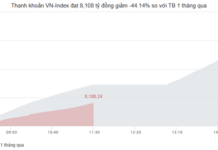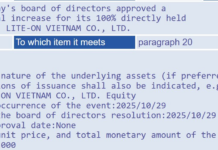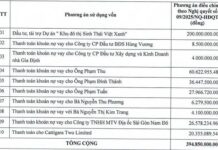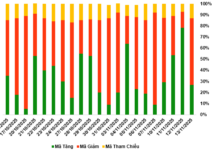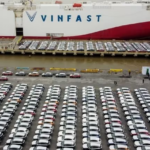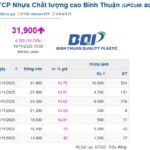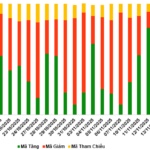Recently, a draft national technical standard by the Ministry of Construction regarding the average fuel consumption (CAFC) for passenger cars in Vietnam has garnered significant attention. According to the draft, by 2030, all newly manufactured, assembled, and imported vehicles must achieve an average fuel consumption of 4.83 liters/100 km.
This announcement quickly captured public interest, especially after the Vietnam Automobile Manufacturers’ Association (VAMA) labeled the standard as “excessively stringent.” VAMA estimates that approximately 96% of gasoline-powered vehicles and 14% of hybrid vehicles currently on the market would fail to meet the requirement if the regulation is officially implemented.

Hybrid vehicles are increasingly introduced in Vietnam.
Concerns escalated as many questioned whether the majority of popular gasoline-powered models would be forced off the market by 2030. This poses significant challenges for manufacturers and importers, while also causing anxiety among consumers.
Clarification from the Registration Department
In response to public and business concerns, on September 23, Vietnam’s Registration Department issued a clarification. The agency asserted that the claim “96% of gasoline vehicles must be discontinued by 2030” is inaccurate.
The average fuel consumption target of 4.83 liters/100 km is not applied to any individual vehicle model or specific company but rather serves as a national average goal. Based on product composition and average production or import volumes, individual entities will have tailored targets.
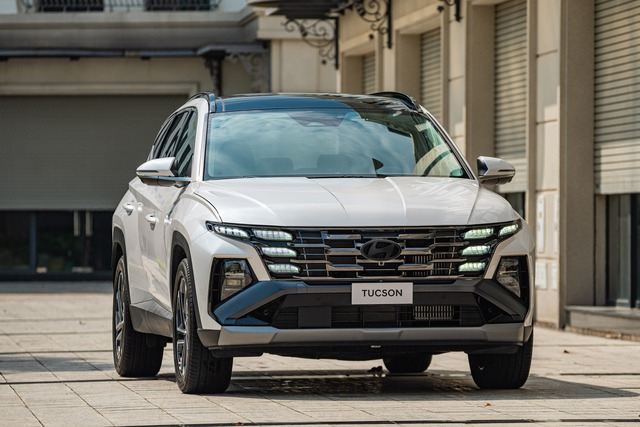
The average fuel consumption standard does not apply to specific models or vehicles currently in use.
Importantly, this standard does not affect vehicles already in use, applying only to new vehicles, including those manufactured, assembled, and imported. This means current gasoline vehicle owners will remain unaffected.
The Registration Department stated: “The claim that 96% of gasoline vehicles must be discontinued by 2030 is incorrect. The average fuel consumption regulation aims to encourage businesses to diversify products, adopt advanced technologies, and reduce emissions, rather than phasing out existing vehicles.”
The department emphasized that the draft is still under review and not yet in effect. Implementation timelines will be carefully considered to align with business, market, and infrastructure realities.
Additionally, the document will undergo further adjustments to ensure practicality before finalization. Flexible solutions, such as energy labeling, engine improvements, and incentives for fuel-efficient vehicles, are also being explored to support businesses.
Green Vehicle Options
As fuel efficiency standards tighten, hybrid and electric vehicles emerge as viable solutions to reduce greenhouse gas emissions.
Hybrid vehicles combine traditional internal combustion engines with one or more electric motors, reducing the load on the combustion engine. Depending on the configuration, electric motors in hybrids handle much of the power at low speeds or in urban conditions, lowering fuel consumption.
A prime example is Toyota’s Hybrid Synergy Drive, which seamlessly switches between the gasoline engine and electric motor to optimize energy efficiency, significantly reducing CO₂ emissions compared to conventional gasoline vehicles.

VinFast VF 8.
Electric vehicles, powered entirely by batteries with no exhaust pipes, produce no direct CO₂ emissions during operation. Modern electric models like the VinFast VF 8 and Tesla Model 3 feature regenerative braking systems that recover kinetic energy during deceleration to recharge batteries, further enhancing energy efficiency.
These characteristics make electric vehicles not only effective in reducing urban air pollution but also aligned with the sustainable development goals of the transportation sector.
Decoding the 4.83L/100km Fuel Efficiency Claim: It’s Not Just About 1.0L Engines or Electric Vehicles
Journalist Nguyễn Thúc Hoàng Linh emphasized that media outlets and regulatory bodies must provide clear explanations to the public, preventing confusion and minimizing impacts on daily life and business operations.
Green Transportation Transition: Hanoi and Ho Chi Minh City Must Implement Citizen Support Policies
The Government Office has issued a directive urging the People’s Committees of Hanoi and Ho Chi Minh City to promptly disclose their roadmaps for transitioning to green transportation. This announcement emphasizes the need for clear, actionable support policies to accompany the shift toward sustainable mobility solutions.





